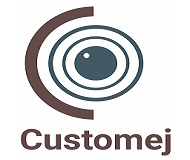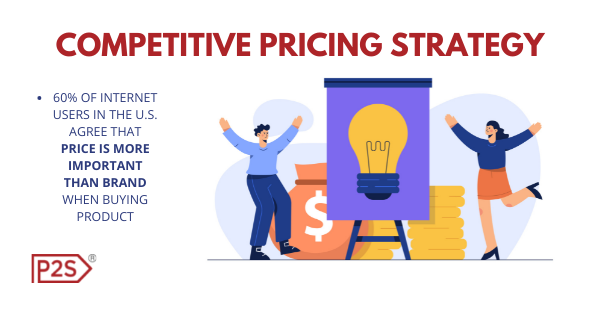You’ve probably heard of the saying, “You have to spend money to make money.” In business, this couldn’t be truer. But how do you decide how much to charge for your product or service? If you want to stay ahead of the game, it’s important to understand and implement the different pricing strategies available to you. In this article, we’ll take a look at one particular strategy – competitive pricing – and explore how it can benefit your business.
What is competitive pricing?
Competitive pricing is a pricing strategy where businesses set their prices based on their competitors’ prices. Businesses may use competitive pricing to gain market share, increase sales, or drive down costs. Competitive pricing is often used in industries with high levels of competition, such as the retail industry.
There are several advantages to using competitive pricing as a pricing strategy. First, it is a simple pricing strategy to implement. Second, it can help businesses gain market share and increase sales. Third, it can help businesses drive down costs. Finally, it can help businesses keep prices in line with their competitors.
There are also some disadvantages to using competitive pricing as a pricing strategy. First, it can lead to a price war between businesses. Second, it can lead to decreased profits for businesses if they are not able to sell their products at a higher price than their competitors. Finally, it can lead to an overall decline in the quality of products and services if businesses start cutting corners to compete on price.
Overall, competitive pricing is one of the best yet simplest pricing strategies available to businesses. It has its advantages and disadvantages, but its benefits typically outweigh its drawbacks. If you are looking for a pricing strategy that will help your business grow
How does competitive pricing work?
When it comes to pricing, there are several strategies businesses can use to stay ahead of the competition. One of the most effective, yet simplest, is competitive pricing.
Competitive pricing essentially means setting your prices based on what your competitors are charging. This ensures that you are never too high or too low, but always in the sweet spot that will attract customers and help you boost sales.
There are a few things to keep in mind when using competitive pricing as your pricing strategy:
- Know your competitors inside out. This includes their prices, their product offerings, and any discounts or deals they may be running.
- Don’t get caught up in a price war. If your competitor drops their prices, don’t panic and follow suit. This will only lead to a race to the bottom that nobody wins.
- Use competitor pricing as a starting point, not an endpoint. In other words, don’t just blindly copy what your competitors are doing. Use their prices as a guide and then adjust accordingly based on your own unique offering and target market.
By following these tips, you can use competitive pricing to your advantage and ensure that you are always offering customers the best value for money.
The benefits of competitive pricing
When it comes to pricing, businesses often have a variety of strategies to choose from. But competitive pricing is one of the best yet simplest strategies out there. Here are some of the benefits of competitive pricing:
- It helps you stay one step ahead of the competition.
If your prices are lower than your competitors’, you’ll be able to attract more customers and beat them at their own game. This is especially beneficial in markets where price is a major factor in consumers’ decision-making process.
- It keeps your prices fair.
No business wants to be known for overcharging its customers. By monitoring and matching your competitors’ prices, you can make sure that your own prices are fair and in line with what others are charging.
- It can help boost your sales.
In many cases, competitive pricing can lead to an increase in sales. Customers are always on the lookout for a good deal, so if they see that your prices are lower than your competitors’, they’re more likely to buy from you instead.
- It helps you build trust with customers.
Customers appreciate businesses that offer fair and competitive prices. When they see that you’re not trying to rip them off
The disadvantages of competitive pricing
While competitive pricing may be a good pricing strategy for some businesses, it does have its disadvantages. One of the biggest disadvantages is that it can lead to a race to the bottom, where businesses are constantly trying to undercut each other on price.
This can erode profits and make it difficult to sustain a business in the long run. Additionally, openmindseo.com competitive pricing can create a lot of price pressure and stress for businesses, which can take a toll on employees’ morale.
How to implement a competitive pricing strategy
If you want to stay ahead of the competition, it’s important to have a pricing strategy that is both aggressive and sustainable. Here are a few tips on how to implement a competitive pricing strategy:
- Know your audience. It’s important to know your target market’s price range. This helps determine the price.
- Do your homework. It’s critical to understand what your competitors are charging for comparable products or services. This will assist you in ensuring that your prices are competitive in the market.
3.Be flexible. Don’t be afraid to adjust your prices based on market conditions or customer feedback. Being able to adapt to changing circumstances will help you maintain a competitive edge.
- Promote discounts and specials. Offering discounts and special promotions can help attract new customers and keep existing ones coming back for more.
Following these tips will help you develop a pricing strategy that is both competitive and sustainable.
Supercharge your SEO with premium high-DA doc sharing sites. Quick approval ensures your site gets fast rankings improvements, boosting your visibility and organic traffic.
Conclusion
When it comes to pricing your product or service, don’t underestimate the power of competitive pricing. By aligning your price with that of your competitors, you send a signal to your customers that you’re offering a quality product at a fair price. Not only does this help to attract new customers, but it also helps to keep your existing customers loyal. If you’re not sure where to start, take a look at your competitors’ prices and use them as a starting point for setting your own.




